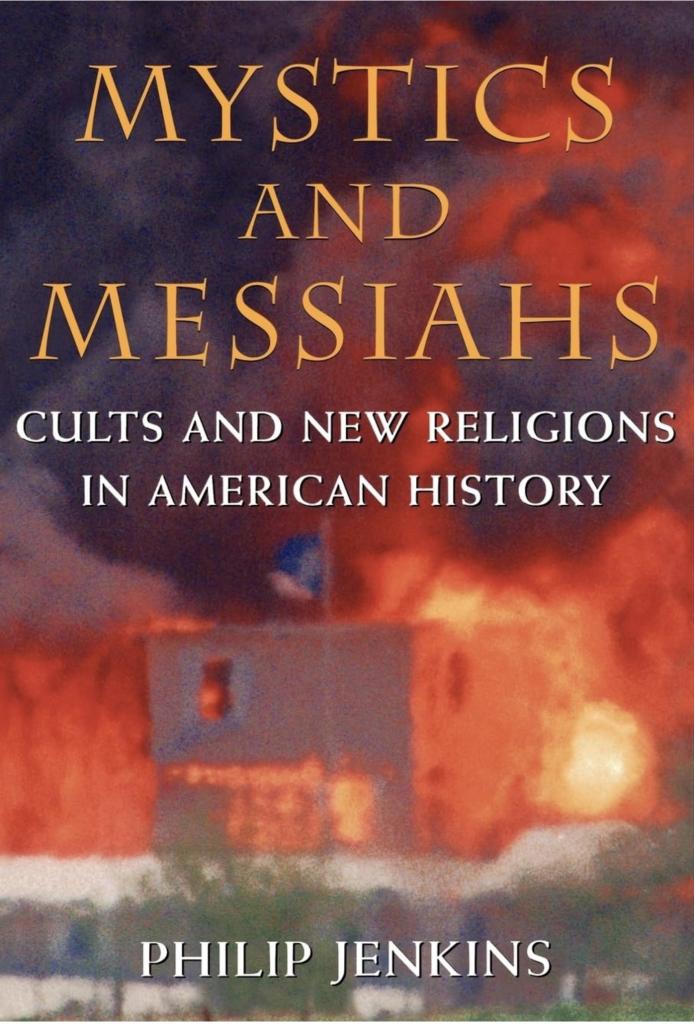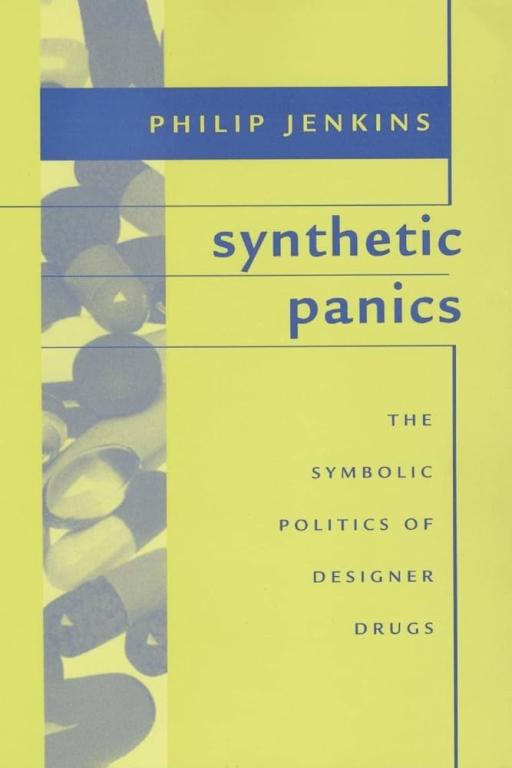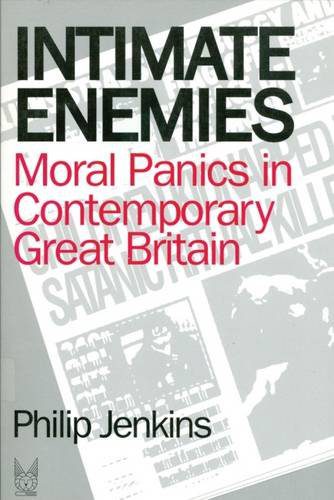I have been writing about the sequence of books I had published in an earlier phase of my career on the construction of social problems and panics. The constructionist approach I used still seems to me to be very valuable. So might I ever go back to writing and research in that sizable area? What follows is is an intellectual exercise rather than an actual game plan, but I hope that addressing that question might be of some interest.
Mainly in the 1990s, I published a lot of books on the theme of social problems, which included studies of cults, drugs, threats to children, serial murder, and other issues. In each case, I argued that the issue in question undeniably had a core of objective reality, but that the particular way we understood it – and how we frame possible solutions – depended on cultural work by a number of groups, activists and agencies. Among other things, you absolutely had to understand the workings of media and popular culture, including fictional depictions on film and television. Having largely said what I wanted to say about most of these things (not all), I then moved on to other things in terms of research and publication.
So would I go back? One obvious point is that this is all a long time ago, a very different cultural and political world. Having said this, I have closely followed the sizable social problems literature as it has developed through the years, and especially in fields like child abuse and concerns over cults or new religions. I would love to update my old Mystics and Messiahs work on the history of American fringe religions, and the successive fears and panics they have inspired through the years.
Meanwhile, I have always stayed very close to the literature on clergy sexual abuse, and the continuing debates that topic has inspired. The prospect of writing a history of the whole clergy abuse phenomenon in recent American history is tempting, if daunting in terms of its sheer scope and complexity.
Drug Crises Then and Now
Also, we assuredly do not lack for new problems to analyze and take apart today in the US, not least in the drug area. Nobody doubts that fentanyl, say, is a massive social issue that claims many lives, but there is still lots to be done about the rhetoric surrounding the crisis – about how it has been constructed. The same applies to the opioid crisis, and here too, the racial aspects are crucial. Whenever America has had a drug crisis or problem, whether genuine or inflated, racial politics have virtually always been evident. We can scarcely write the history of American race relations and racial stereotypes over the past 150 years – of the whole history of Whiteness – without drawing centrally on such drug-related themes. In some instances, stigmatized racial groups were accused of using drugs to infiltrate and conquer White society – think of the Chinese and East Asian association with successive panics over opium and heroin.
Most commonly, Black-White stereotypes were to the fore. Drugs were generally portrayed as singularly damaging and dangerous because of their effect in enhancing negative characteristics that were attributed to Blacks, especially in terms of violence. Also, drugs threatened to spread those supposedly Black characteristics – violence, sexual excess, irresponsibility, primitivism – to vulnerable White populations. Sexual subtexts have often been in play, in suggesting sexual threats to young White women. Throughout, the implied danger is that drugs will cause White users to forsake or betray their proper racial status and qualities.
Sometimes, the racial context of such rhetoric has been overt and unconcealed, but in more recent times, it was somewhat coded, for example in the contrast between the “inner city” and the suburbs. The law enforcement bureaucrats and politicians who used such rhetoric may or may not have believed it themselves, but they knew it was likely to be highly convincing to a general audience. Much of the literature on social problem construction grew out of studies of successive drug panics, from the cocaine scare around 1914 to marijuana in the 1930s, heroin in the 1960s, and then on through crack, PCP, methamphetamine, and “club drugs” like Ecstasy, and in each case, racial and ethnic themes were central.
All of which brings us to the modern-day crises over opioids and fentanyl. I know there is a substantial literature on racial disparities in understandings of these issues, but I think a great deal remains to be said.
More broadly, the whole current affair cries out to be analyzed as a constructed social problem. The issue is not whether a very damaging social threat exists, as of course it does, but rather how people acknowledge and define it as a problem or a crisis. The same questions apply to anything that we perceive as a major social problem. Simply put, what sort of problem is it? How do we contextualize it? Any answer to that question determines solutions. In the case of opioids, we can agree with condemnations of corporate abuse and irresponsibility, but are there other framings, with the implied solutions? Is it a racial crisis, a crisis of Whiteness, of masculinity, of class, of economic and geographic inequalities?
At every stage, the core question is: how do we know what we think we know? What groups or agencies or activists have assumed the authority to undertake such interpretation, and how have they achieved that credibility? Are there signs of rivalry among these various players in how they frame the problem? How do these activists and agencies use language and rhetoric to understand it, to “make it mean”? Which messages resonate most successfully with media? When can we legitimately speak of a drug “epidemic” with all the biomedical implications of that term? When should we apply the loaded (and misleadingly precise-sounding) term “addict” to users?
How do those groups and agencies use statistics? To ask that question is absolutely not to challenge the undeniable fact that tens of thousands are dying each year from overdoses, but what debates and controversies exist concerning definitions, and just how we count such things? I’m sorry if I sound paranoid here, but in bygone years statistics for drug deaths and overdoses were notoriously subject to manipulation and outright deceit, and coroners’ reports in such cases were among the finest works of American creative fiction. That was certainly true with the methamphetamine issue as recently as the 1990s. “So the man’s system contained major amounts of heroin, cocaine, PCP, methamphetamine, marijuana, and alcohol, so this is another death that was clearly a direct consequence of methamphetamine abuse.” No, I am not making up that kind of example.
Let me make clear that I have no reason to suspect that the abuse of statistics is anything like as bad today, but reasonable people can always disagree on how they interpret such numbers.
Satanic Continuities
I have posted at Anxious Bench quite a few times on other social problem themes, including on cult and child abuse issues. Indeed, it is hard to understand QAnon except as a kind of giant vacuum cleaner sucking up the remains of the panics of the late twentieth century, including the ritual child abuse. Before that, QAnon certainly looks to older American nightmares over anti-Semitism and more particularly to anti-Catholic mythologies. From a scholarly point of view, QAnon is the gift that keeps on giving. Just do the research!
That QAnon example points to one major change that any kind of constructionist work would have to take account of, namely how much of the work of construction has moved online, which was certainly not true a quarter century ago. That certainly requires whole new skill-sets, but on the other hand I was one of the early people studying deviant Internet subcultures back in the 1990s, so this is not entirely new to me. Again, I have posted on related themes at this site.
This kind of déjà vu struck me forcefully a few years ago when a book I published a long while back suddenly returned to life. In 1992, I wrote a book called Intimate Enemies about the panics then sweeping Britain about alleged Satanic cults, also about child abuse and serial murder more generally. In 2015, the country had a vast national panic about the exact same things, when a squalid liar reported to police that as a child, he had been a victim of a supposed cult led by very powerful politicians, including the former Prime Minister Edward Heath. And of course the police believed every ridiculous and self-contradictory word, and went into full Stasi mode.
I wrote about this whole Westminster Pedophile affair at the time, stressing how precisely the whole affair was just repeating the lunacies of the early 1990s, but I was very surprised to hear that my old Intimate Enemies book was suddenly a hot item for journalists, and copies were being passed around like contraband. This whole story did underline that in studying social problems and panics, to quote Faulkner, the past is never dead: it’s not even past. Or alternatively, as they used to say about London buses, don’t worry if you miss one, there’ll be another coming along in ten minutes.
By the way, even the police now acknowledge that the whole Westminster affair was a baseless shambles from start to finish, and in 2019 the liar who was responsible for the whole farrago was sentenced to a lengthy prison term. But this is no time to gloat (hah!)
So will I go back to that former academic life, to Jenkins 1.0? Maybe – but my Lord, I have a lot of other things on my agenda first.
















